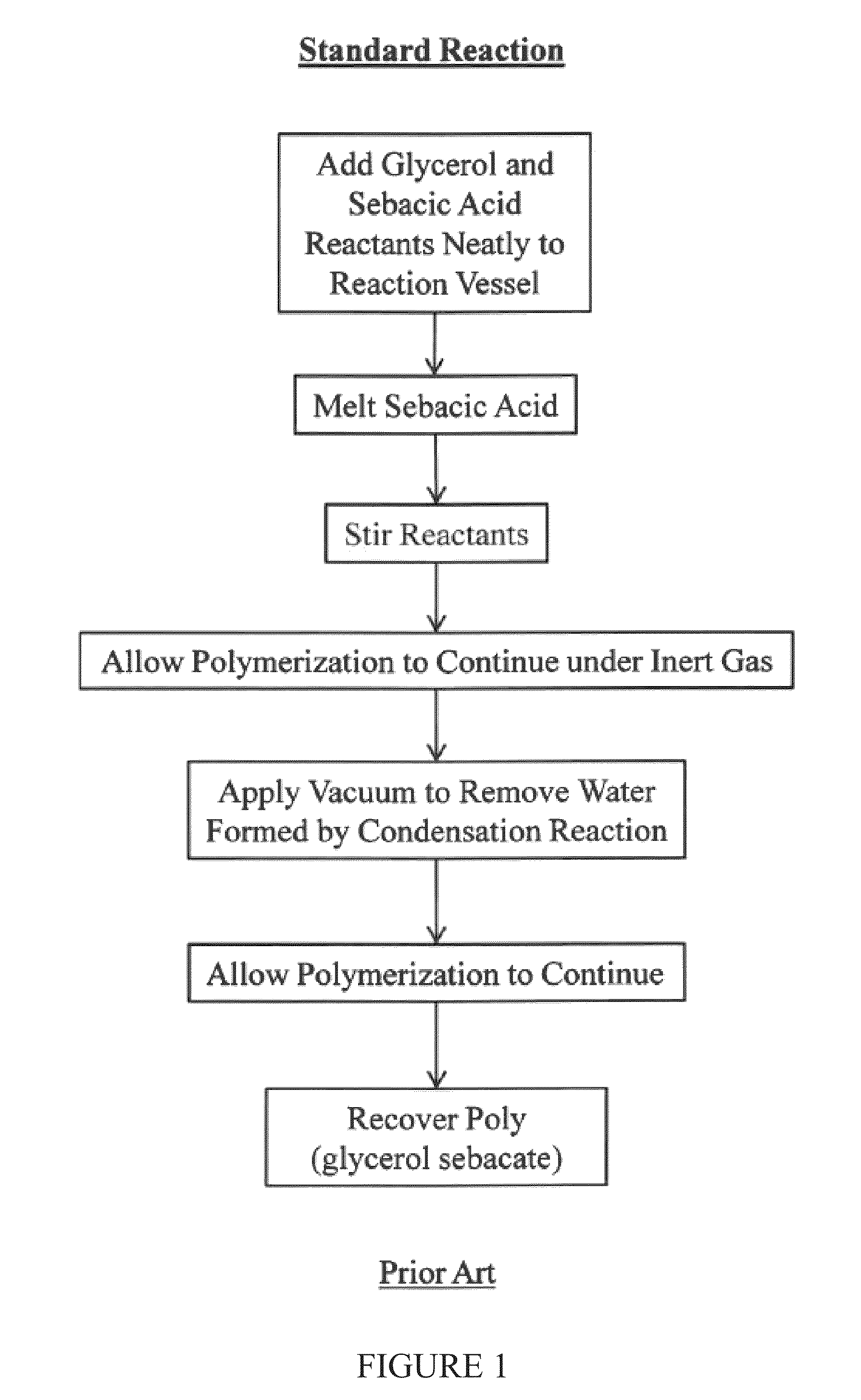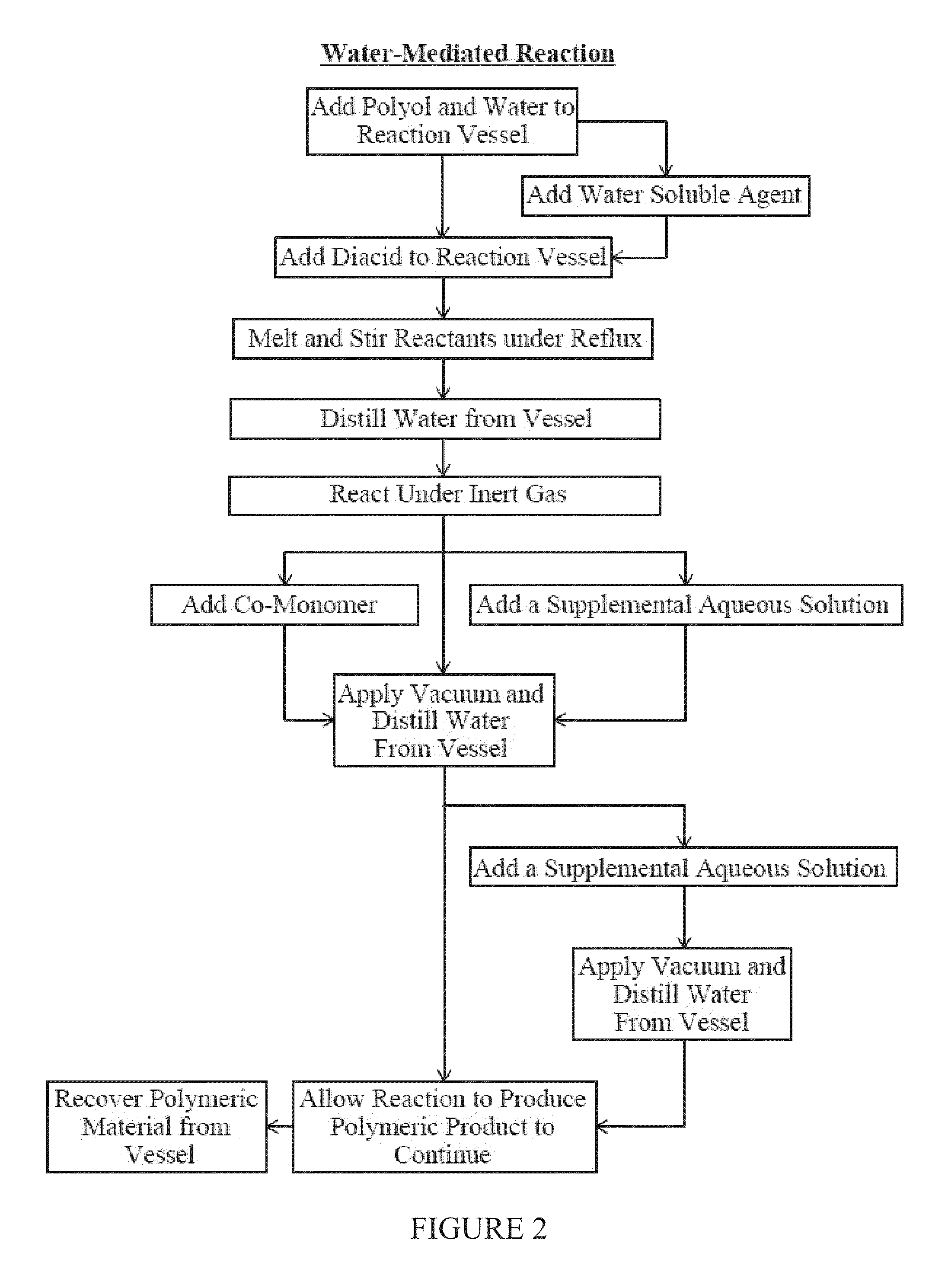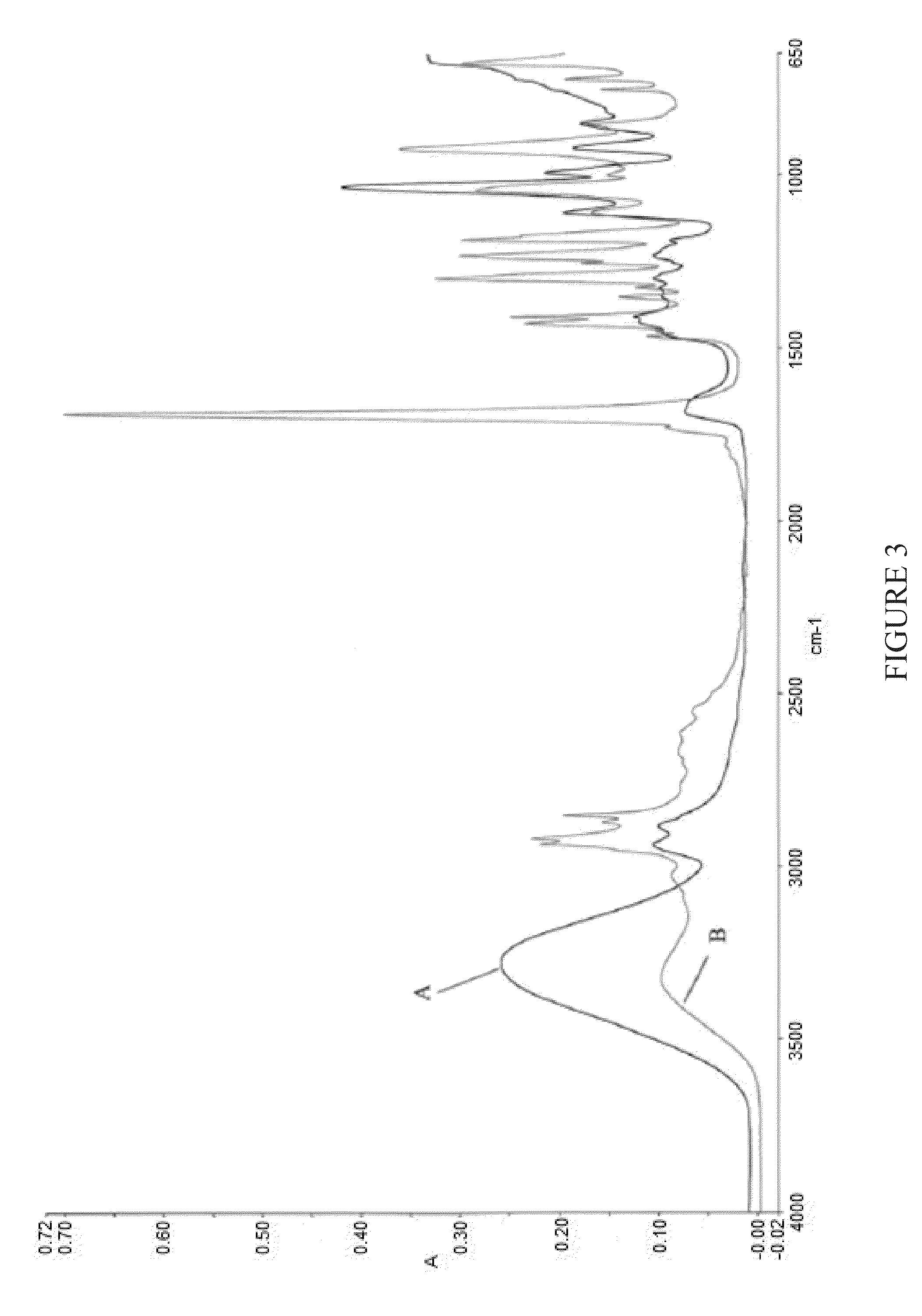Water-mediated preparations of polymeric materials
a polymer material and water-mediated technology, applied in the direction of peptide/protein ingredients, biocide, saccharide peptide ingredients, etc., can solve the problems of biomaterials that may fail to perform consistently, difficult control and modification, and process problems
- Summary
- Abstract
- Description
- Claims
- Application Information
AI Technical Summary
Benefits of technology
Problems solved by technology
Method used
Image
Examples
example 1
[0076]Glycerol (62.0 g, 0.673 mol) was added to a reactor vessel with water (37.5 g, 2.08 mol) under stirring. After dissolution of the glycerol, sebacic acid (138.0 g, 0.682 mol) was added to the reactor vessel. The reactor vessel was then fitted with a condenser to reflux water during the melt and stir steps of the PGS polymerization (condenser temperature was set to 2.5° C.). The reactor vessel was then heated to a mantle temperature of 140° C. with a stir speed of 500 RPM for approximately 70 minutes. The material in the vessel became clear once the reactor vessel reached approximately 95° C.
[0077]After the sebacic acid melted, the zone temperature was set to 130° C. and the mixture was stirred at 500 RPM under reflux for 50 minutes.
[0078]The condenser was then removed and the vessel was fitted with a distillation condenser to remove water from the vessel. A nitrogen purge was applied to the vessel (5 L / min) and the zone temperature was set to 120° C. During the distillation, th...
example 2
[0083]To assess the impact of adding water to PGS pre-polymer following the early stages of polymerization, further reaction conditions at temperatures below 120° C. were assessed for processability of the material.
[0084]PGS pre-polymer was produced in three reactor vessels in the manner described with respect to Example 1, the pre-polymer being that material after the nitrogen purge but prior to vacuum. Following these steps, water was added to reactor vessels, and pre-polymer and water were mixed for approximately 30 min, during which a homogenous dispersion was formed. Following this step, the condensers were removed from reactor vessels and a vacuum setup was applied. The vacuum was applied to each reactor, starting at 650 Torr and, slowly, the pressure was reduced stepwise (about 10% each step) to a terminal setting of 5 Torr over the course of 100 minutes.
[0085]As vacuum reached its terminal setting, the temperature was reduced in reactor 1 to 110° C. and stirred at 500 RPM. T...
example 3
[0089]Glycerol and sebacic acid were added in 1:1 molar amounts in water to melt the sebacic acid in a similar manner as described in Example 1 using a condenser to reflux water during the melt and stir steps, followed by distillation to remove the water once the sebacic acid was melted. The components of the vessel were stirred under nitrogen for 24 hours at 120° C. at atmospheric pressure and a nitrogen flow rate of 5 L per minute, the time measured from the point at which it was determined all water initially added had been removed by distillation. At the conclusion of that 24 hours, the pressure was reduced to 10 Torr and the temperature to 115° C., and the reaction was allowed to proceed for another 24 hours.
PUM
| Property | Measurement | Unit |
|---|---|---|
| Temperature | aaaaa | aaaaa |
| Temperature | aaaaa | aaaaa |
| Time | aaaaa | aaaaa |
Abstract
Description
Claims
Application Information
 Login to View More
Login to View More - R&D
- Intellectual Property
- Life Sciences
- Materials
- Tech Scout
- Unparalleled Data Quality
- Higher Quality Content
- 60% Fewer Hallucinations
Browse by: Latest US Patents, China's latest patents, Technical Efficacy Thesaurus, Application Domain, Technology Topic, Popular Technical Reports.
© 2025 PatSnap. All rights reserved.Legal|Privacy policy|Modern Slavery Act Transparency Statement|Sitemap|About US| Contact US: help@patsnap.com



